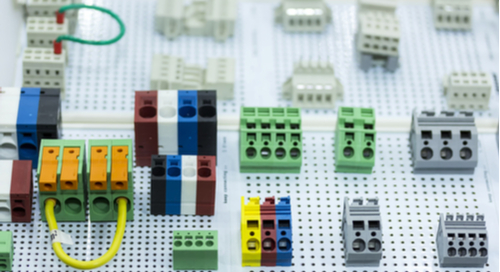Easy Mounting of PCB Connector for High Voltage
PCB Mount Connectors
Boards are often designed and built individually, connectivity to other boards or external devices is required in all but a small number of cases. This is especially true for high power and current applications. Some boards that carry high currents may not be high power and vice versa. For these boards, it is typical for high voltage connectors to be utilized from the power supply or to drive load circuits or systems.
Let’s take a look at the types of high voltage connectors used for circuit boards, the design challenges they present and how to best address them.
Types of PCB High Voltage Connectors
The types of connectors that may be found on circuit boards is not limitless, but they are numerous. These include many forms of zero-insertion force (ZIF) connectors, as well as special connectors such as USB, Ethernet, and CAN bus. Certain classes of PCBs, for example, those used in the critical industries of automotive, industrial and aerospace systems, often require high voltage connectors. A few connector types that are commonly used for high voltage are listed below:
High Voltage Connector Types:
1 Terminal blocks
2 Screw
3 Binding posts
4 Ring, Fork or Spade
5 Sockets
Irrespective of the type of high voltage connector used there are design challenges that must be addressed.
Different types of connectors
High Voltage Connector Design Challenges
Standardized connectors, such as USB, are easy to incorporate into your design as the electrical parameters are well-known. This is also true for some high voltage connectors, such as the EP series RJ45 CONNECTOR, 129/3 PCB CONNECTOR (3PIN), 129/2 PCB MOUNT CONNECTOR (2PIN), 126/3 PCB MOUNT CONNECTOR (3PIN), 126/2 PCB MOUNT CONNECTOR (2PIN) connectors. However, in many cases, there are no standards or known parameters and ensuring the connector aligns with your board’s trace routing and matches with external devices is more complicated. As these connectors tend to connect external sources is also a major concern. These are significant challenges, but there are other design issues that you face when incorporating high voltage connectors; including the following:
- Trace width and copper weight
Probably, the most important issue is making sure that your traces can carry the necessary range of currents. This requires that you determine the required trace widths and copper weights to prevent over current and component, connector or board damage.
- Connector placement
Where to place your connectors is also important for a number of reasons. The location you chose, along with the cabling, may affect other component placement, the length of traces, board weight distribution (which may be a significant issue for flex boards), space requirements for enclosures and panelization. For some applications, the connector location may be fixed. For example, when board edge connectors must be accessible through cutouts in the casing.
- Connector size
The size of your connectors directly affects its enclosure and where it can be mounted. If these mechanical issues are fixed, then your options for connector size will be limited.
- Impedance matching
The ability of your board to not only physically connect, but also efficiently transfer signals to other PCBs or devices is also a consideration. This most often means striving for maximum power transfer.
- Depanelization
The final shape of your board is determined by how it is separated from the rest of the panel. And the depanelization method used is dependent upon your board edge, which is the most common location for connectors. For v-scoring and a smooth edge, you need to ensure that connectors do not violate board edge clearance requirements. For connectors that must overhang the edge, they must be assembled after depanelization.
As shown, there are many design concerns when using high voltage connectors and addressing them can be quite difficult unless you have the right tools at your disposal.
Easy PCB Layout Design for High Voltage Connectors

Successfully, merging the various design factors that come into play when your board requires high voltage connectors is daunting. And without the right PCB Connector, your design process can seem like a continuous cycle of trial and error. However, with an advanced PCB layout that includes functionalities; such as 3D view and design integration, your design process can be greatly simplified and faster.
If you’re looking for electronic component solutions, Visit to Chawla electronic India.




Comments
Post a Comment